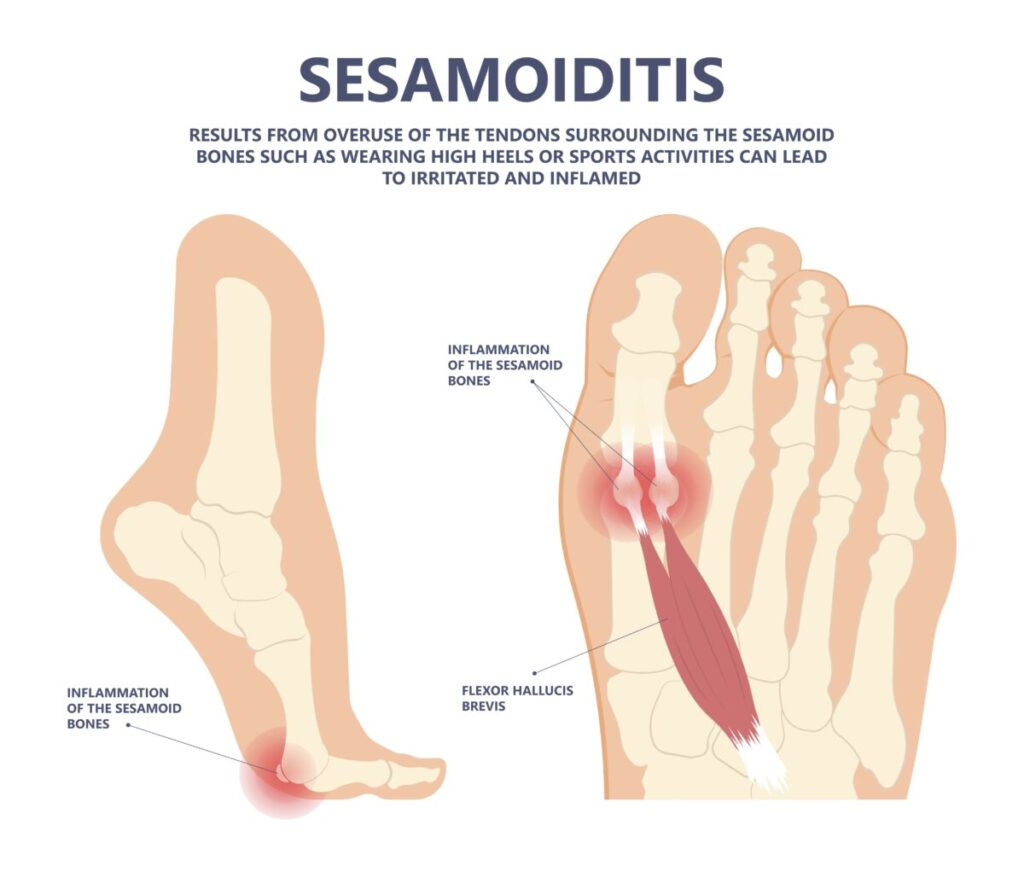Sesamoiditis Symptoms & Treatment
What Is Sesamoiditis?

Table of Contents
What Causes Sesamoiditis?
Sesamoiditis occurs when the sesamoid bones, two small bones located beneath the big toe joint, become irritated or injured due to overuse and repetitive impact.
Symptoms Of Sesamoiditis
The symptoms of sesamoiditis typically worsen gradually. What begins as a mild ache can quickly progress to intense throbbing. As the condition becomes more severe, it may become difficult to put weight on the big toe or walk comfortably. You might also notice swelling or redness around the big toe joint, along with pain when attempting to bend the toe upwards.
Injuries to the sesamoid bones can vary from mild irritation to a fracture. It’s important to seek early treatment to prevent the condition and pain from worsening.
Visit Us Today
Hope Island
Phone: 07 5510 9222
Located within Hope Island Marketplace Medical & Skin Clinic, 99-103 Broadwater Ave Hope Island QLD 4212
Jimboomba
Phone: 07 5546 9766
Located Within Jimboomba Medical Centre, Unit 1/69 Cerina Cct, Jimboomba QLD 4280
Beenleigh
Phone: 07 3287 2224
Located Within Beenleigh Mall Medical Centre, Shop24A, 40/68 Main Street, Beenleigh QLD 4207
Eagleby
Phone: 07 2889 1666
Located Within Eagleby Family Practice, 5/120 River Hills Rd, Eagleby QLD 4207
Harristown
Phone: 07 4635 6111
Located Within Toowoomba Medical Centre, 146 Drayton Road, Harristown QLD 4350
Marsden
Phone: 07 3067 2370
Located Within Marsden Family Doctors, Shop 28/55-77 Chambers Flat Rd, Marsden QLD 4132
Keperra
Phone: 07 3355 4082
Located Within Keperra Medical Clinic, 14 Dallas Parade Keperra QLD 4054
Coomera
Phone: 07 5573 5663
Located Within Doctors @ Coomera Central, Shop 6, 21 Coomera Grand Drive, Upper Coomera, QLD 4209
Newtown
Phone: 07 4633 8700
Located Within Ochre Medical Centre Wyalla, Shop 20, 238 Taylor Street, Newtown QLD 4350
Who Suffers From Sesamoiditis?
While anyone can develop sesamoiditis, those who engage in activities that involve repetitive loading of the ball of the foot, such as dancing, sprinting, or even walking, are more likely to experience this condition. Individuals with prominent foot bones, higher arched feet, flat feet, or those who tend to run on the ball of their foot are also more prone to developing sesamoiditis.
Sesamoiditis Treatment
Sesamoiditis Surgery
In severe cases or after a true sesamoid fracture, surgery may be necessary to remove the damaged or fragmented sesamoid bone. Due to reduced blood supply in some cases, healing may be delayed or absent, requiring a surgical review.
Enquire Now
Not The Condition You Are Looking For?
Find out more about the conditions we treat by clicking below.
